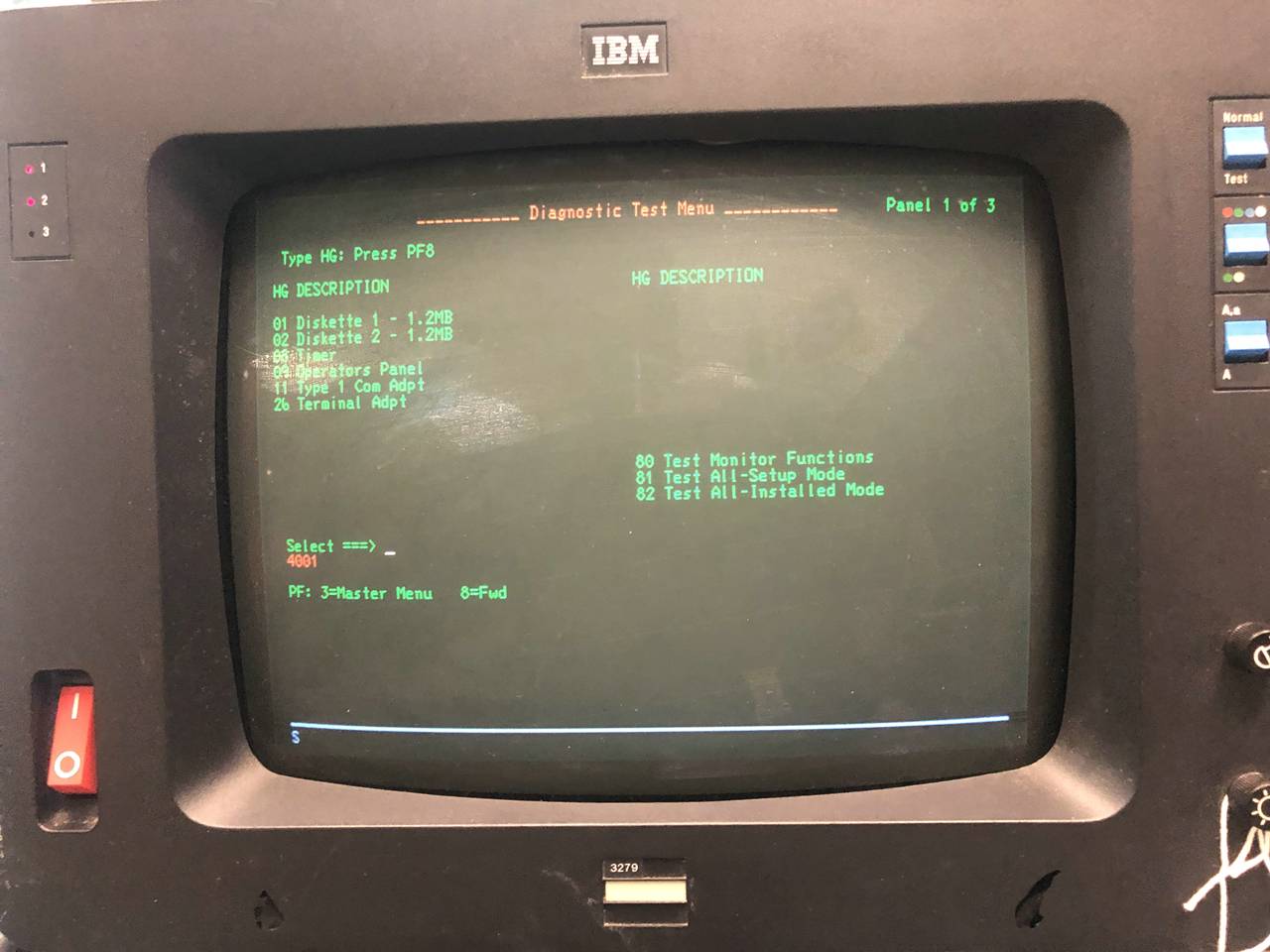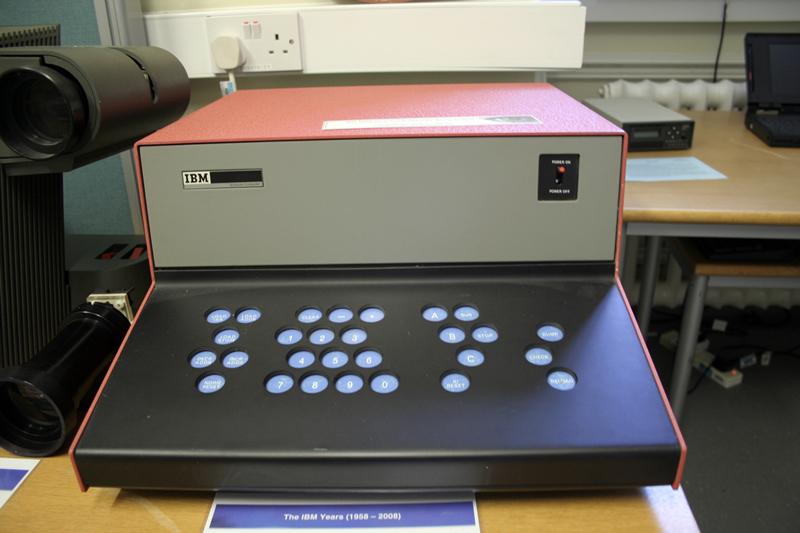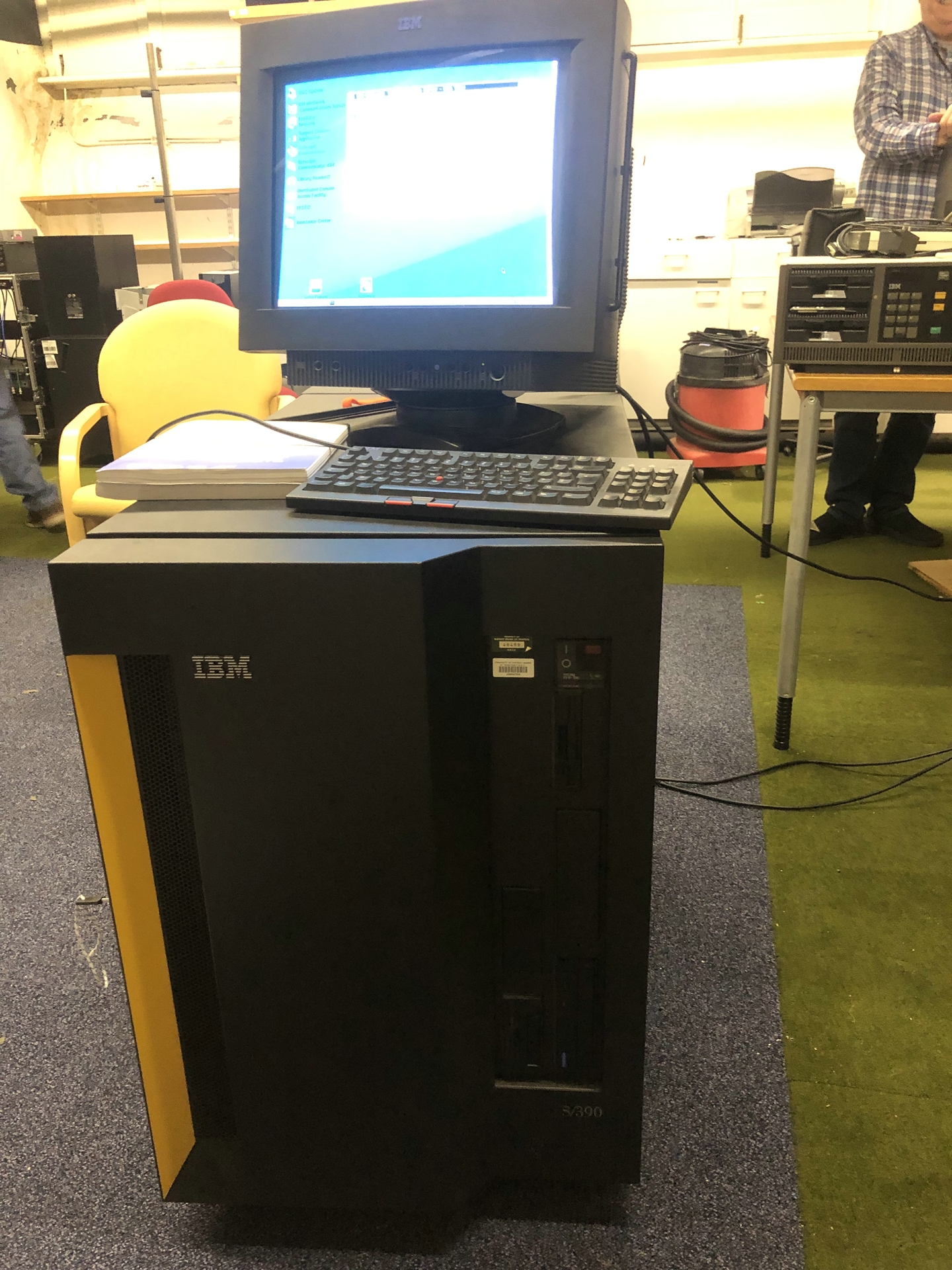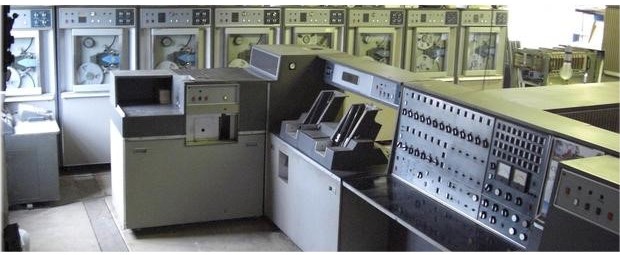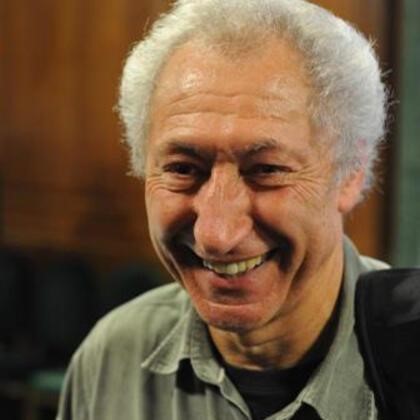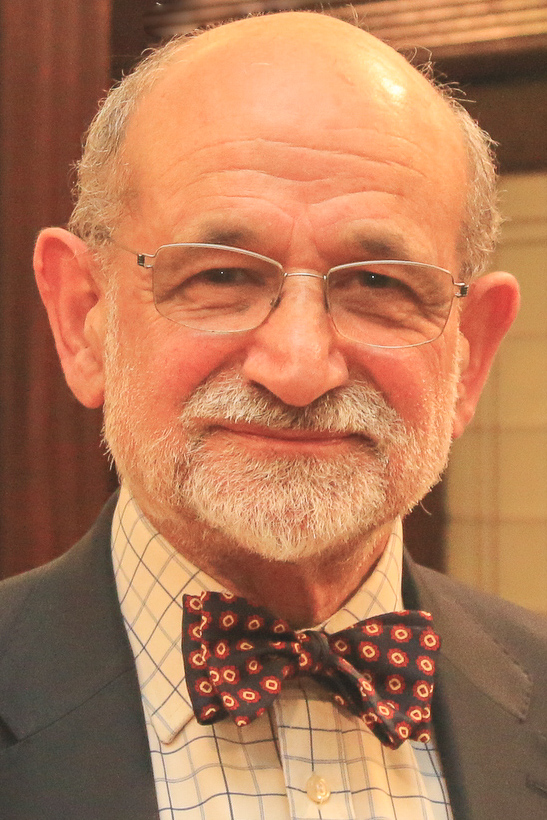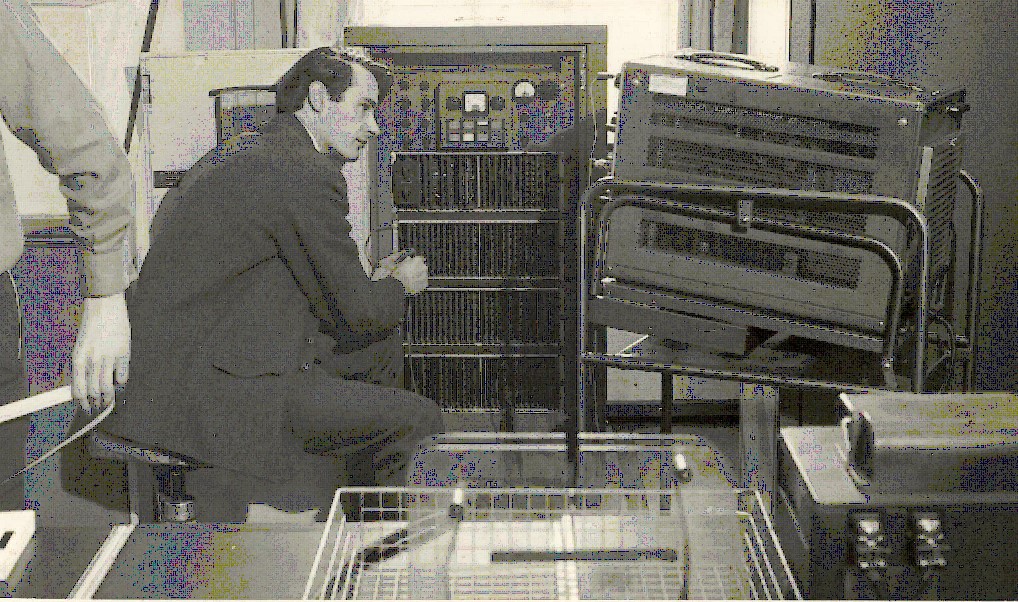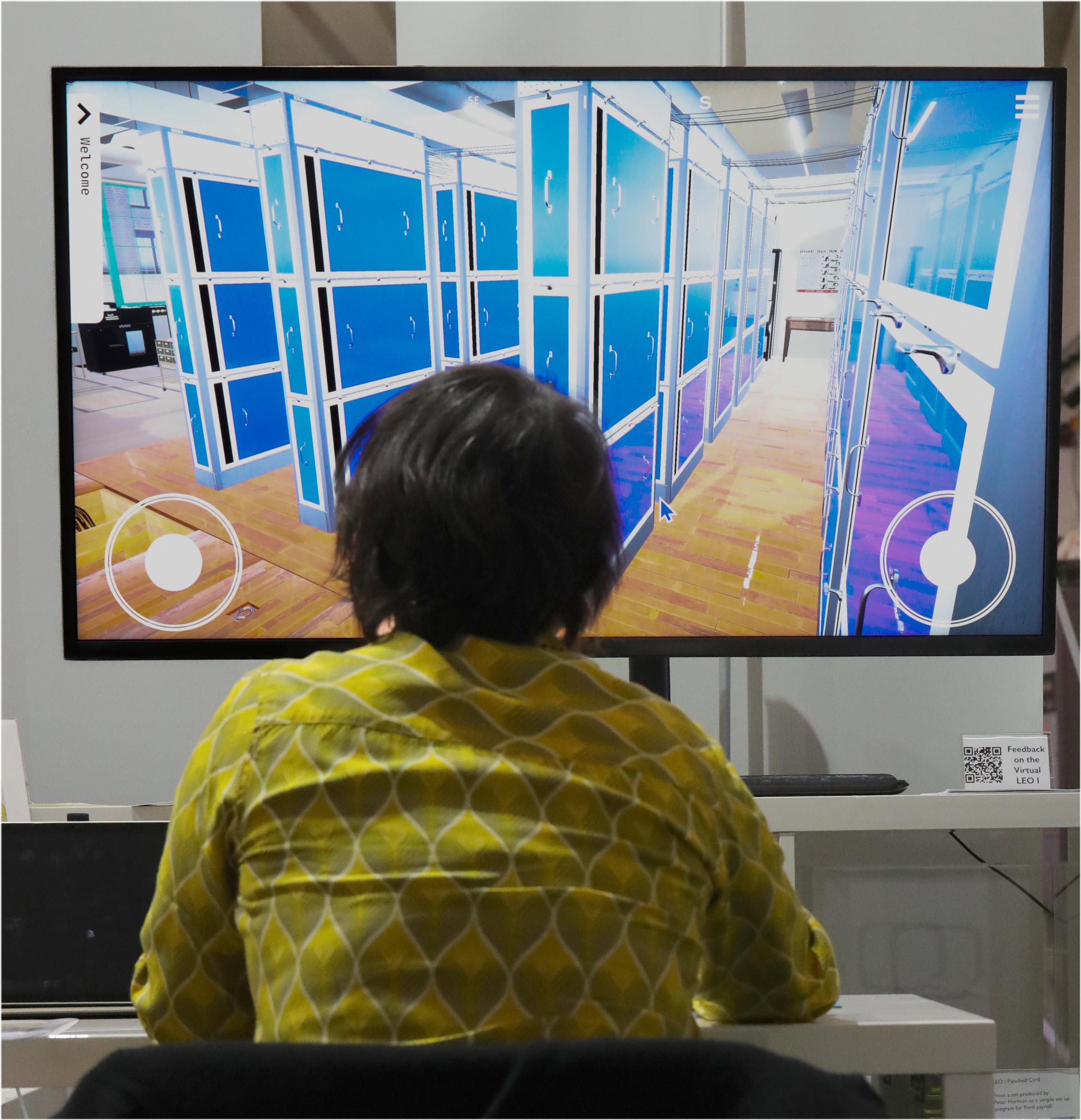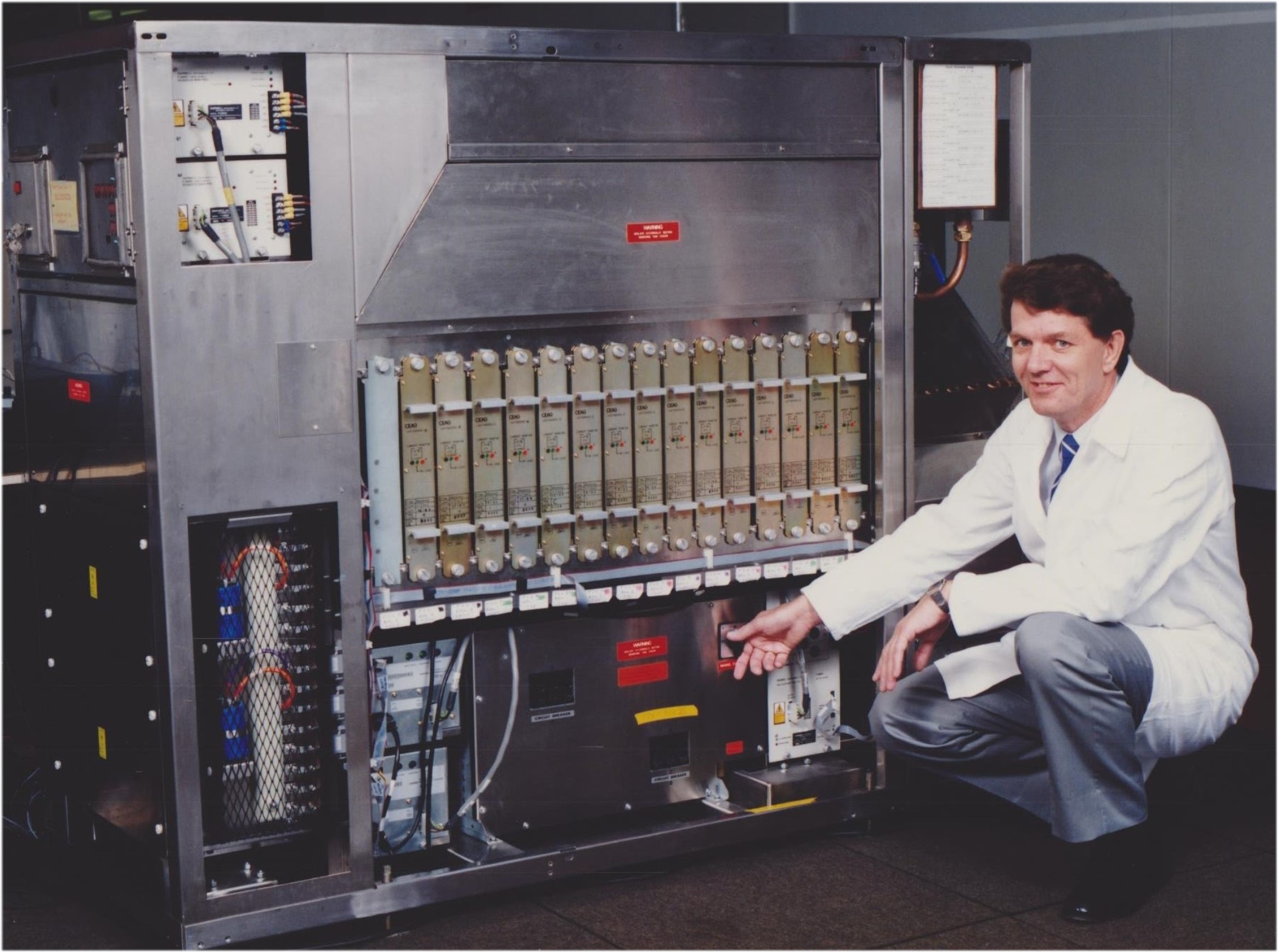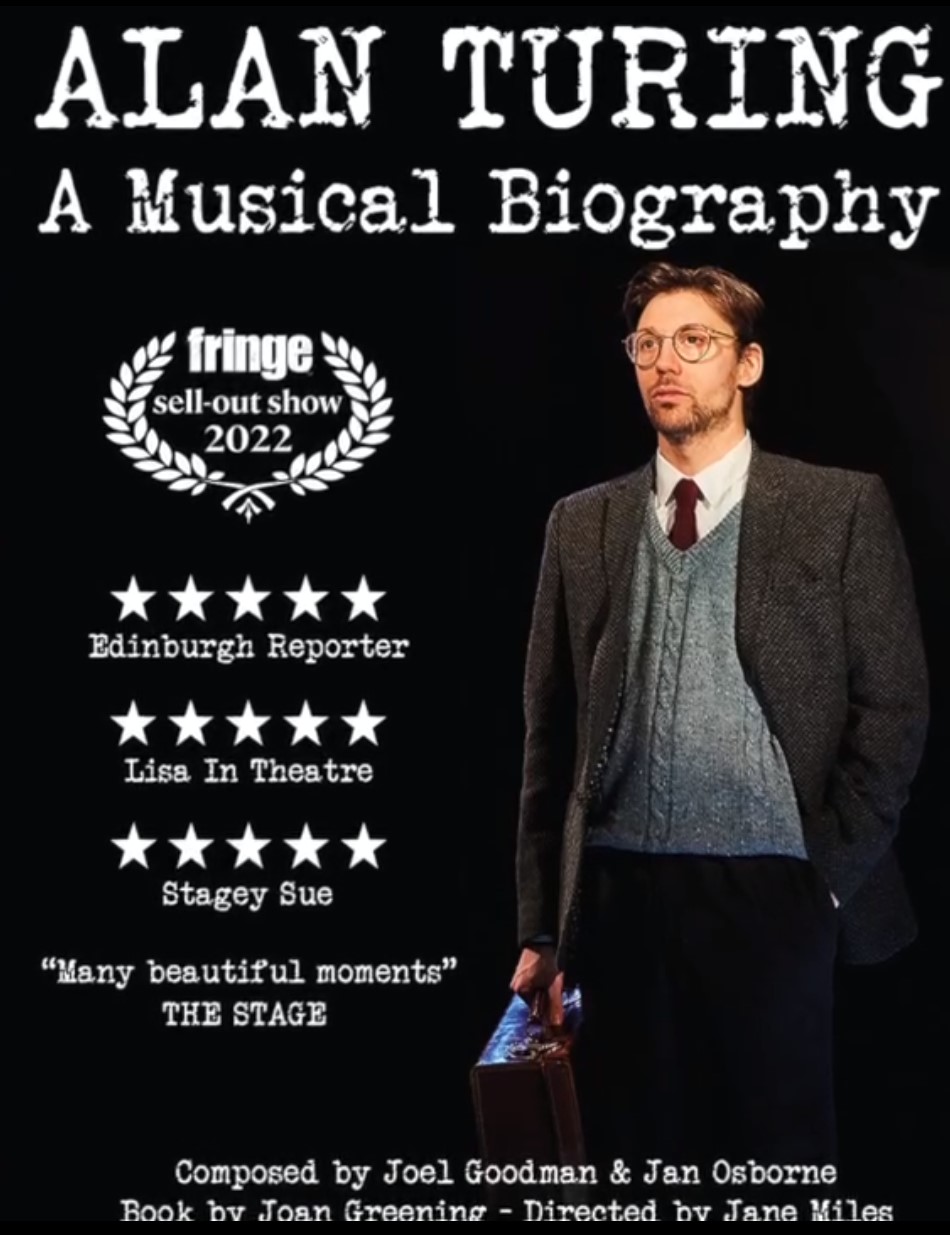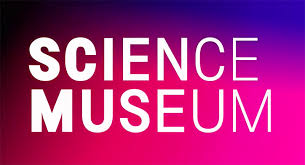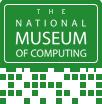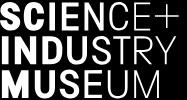50 Years ago .... From the Pages of Computer Weekly
Brian Aldous
BP to use Argus 500s for oil work: Monitoring of off-shore oil production in BP’s North Sea Forties Field
With this sort of usage the company is claiming an MTBF of 5,000 hours and a minimum error rate of one in 100 million.
(CW 20-27/12/1973 p8)
Hand-writing reader being studied by CCA:
An investigation into the potential of a data entry system which can read hand-printed characters is being
carried out by the Central Computer Agency on behalf of the Department of Health and Social Security.
The system is called Grafix 1 and is manufactured by Information International Inc (III) of Los Angeles.
The contract has been placed directly with III, but Manotek Ltd, of Gerrards Cross, Bucks, the company’s
agent for Europe, is liaising with the CCA on the project.
The CCA will test Grafix 1 by producing 2,000 forms completed by 200 different civil servants and containing
about 40 different kinds of character.
These will be sent to Los Angeles within the next few weeks.
The results, which are expected in March, will be inspected by two government officials, one from the CCA
and the other from the DHSS.
A CCA spokesman stressed that the test is purely exploratory and that no specific application is yet being considered.
(CW 374, 3/1/1974 p1)
Algol 68 compiler now in use;
The compiler and run-time system devised at Liverpool University to allow Algol 68 programs to be written
for the Computer Technology Ltd Modular One machine, is now reported to be fully operational,
and in daily use at the university.
The language is currently available on the Modular One in the university’s Department of Computer Science,
and is operated under a multiple-access system employing 16 visual display units.
As an aid to program development in Algol 68 and other languages, the department has also developed a MOP editor
for use with the Modular One.
The compiler runs under CTL’s own E2 executive, although, according to a university spokesman,
it is written so as to be almost entirely executive-independent.
Operated in compile-and-go mode, as at the university, the compiler requires 32K words of core in addition to backing storage.
It is, however, said to be operable in batch mode in 24K without backing store.
(CW 375, 10/1/1974 p7)
Honeywell launches data entry VDU:
A new visual display unit, the VIP 7700, has been announced by Honeywell for use with both the 2000 and 6000 computer ranges.
It is intended for data entry and retrieval and for interrogation.
First deliveries are under way, and among the first UK customers will be the Glasgow Corporation, which has
ordered 15 for use with its 6060.
The VIP 7700, which is Honeywell designed and manufactured, replaces two earlier VIP models, the 775 and 785.
It has all their features plus some new ones, but at a basic price of £2,160 costs considerably less;
the 775 and 785 were both in the £3,000 plus range.
There are three major new features.
The first is the ability to display a form outline on the screen, leaving the operator to fill in variable information only.
Secondly a dual magnetic tape cassette unit is supplied for storage of data from the display or from the host computer.
Finally, an associated printer is supplied for hard copy of messages received, the contents of the cassette
store or for output from the keyboard.
Two models are available, the one printing 72 positions at 10 chps and the other 118 at 30 chps.
(CW 375 10/1/1974 p38)
Plessey aids target detection:
The detection and monitoring of targets from the Royal Navy’s guided weapon destroyer, HMS Bristol, is
centred on a Plessey Radar digital display system linked to a Ferranti FM 1600 configuration.
The equipment forms part of the Navy’s ADA (Action Data Automation) weapon system.
The Plessey system includes labelled plan displays (LPDs) with tracker-ball and keyboard, totes with tabular
displays, and tactical displays which combine the facilities of the LPDs and totes.
Each display console incorporates computer control and input devices.
Some act directly on the display system itself, while others are used to communicate with the FM 1600 which
stores the present state of control, and is programmed to formulate appropriate messages.
The system has two distinct roles: firstly, to display radar information, to enable target detection and location,
manual tracking and the initiation and control of automatic tracking; secondly, to display data stored in the
FM 1600 to evaluate enemy threats and assign the required weapons.
Radar data is received direct from sensors on board the destroyer, and some of the stored information in the
FM 1600 is also derived from this source.
(CW 376 17/1/1974 p48)
Identicon launches data capture range:
A complete range of automated data collection systems for stock and production control is now available in
the UK from Identicon International, of Godalming, Surrey, the European marketing subsidiary of the
Identicon Corporation, of Waltham, Massachusetts.
The range includes both hand-held light pens and fixed-head devices for reading optical bar-coded labels and tags.
The simplest device in the Identicon range is the Porta Pen data collector, which comprises a hand-held light
pen and a portable magnetic tape cassette with keyboard data collection unit.
This could be used for stock taking in warehouses and retail outlets.
Another hand-held pen collector, the Identicon 300, is designed to interface directly with a computer,
via a long cable and interface.
These light pen devices read a simple black and white bar code.
Identicon’s fixed-head readers can capture a variety of optical codes, including coloured codes,
from tags on a wide range of different types of packages and parts passing along production lines and conveyor belts.
The Identicon 100, for example, reads heavy duty reusable labels which Identicon claims can be read even if
misaligned by up to 15 degrees in all three planes.
(CW 377 24/1/1974 p20)
HP-65 nearest yet to hand-held computer:
The nearest yet to a hand-held computer has been announced by Hewlett-Packard.
The HP-65 programmable calculator has all the features of the existing HP-45 model, plus the capacity
to accept pre-programmed magnetic strip cards, either supplied by H-P from a suite of standard software packages,
or generated by the user using the HP-65 function keys.
The HP-65 is aimed primarily at technicians in electrical engineering, surveying, medicine, statistics and mathematics.
Some 200 standard programs, with up to 100 steps each are already available in these fields.
These can be entered into the HP-65 in a few seconds by passing the magnetic strip through a slot feed on
the side of the calculator, which is only slightly larger and different in appearance to the HP-45.
The major external modification to the HP-45 is the re-assignment of the two top rows of function keys.
The top five keys, designated A to E, act as labels.
The parameters to which they are intended to correspond, in a specific program, are printed in the appropriate
position on the face of the magnetic strip which is inserted as a guide above these keys after the program has been entered.
(CW 377 24/1/1974 p56)
Pilot credit card system goes live:
One of the biggest US credit card organisations, Bank Americard, part of the Bank of America, is now
operating a pilot point-of-sale on-line credit authorisation system in Los Angeles.
This involves 100 terminals installed at small retail outlets in the city and linked to the Bank of
America’s massive Los Angeles computer centre.
This is a possible future application for the Barclays Integrated Network System (BINS) being
implemented in the UK by Barclays Bank.
The terminals and the front end processor used at the computer centre are supplied by the Data
Source Corporation of El Segundo, California, manufacturers of the System 800 credit terminal, which is designed to
read embossed account numbers on credit cards.
The terminals used in the Los Angeles system also read encoded data from magnetic stripes in the
Bank Americard card, and this information, together with sales details entered via the terminal keyboard is
transmitted to the computer centre for verification.
(CW 380 14/2/1974 p8)
Microprocessor uses CMOS technology developed by RCA:
A new microprocessor, said to be the first using Complementary Metal Oxide Silicon (CMOS) technology,
has been developed by RCA at its New Jersey Solid State Technology Centre.
The Centre’s director, Gerald Herzog, said that because of their reliability, low power
requirements and simplified architecture, he expected the microprocessor chips to be used in low-cost, high
volume systems, such as process control and automotive control devices, point-of-sale terminals and programmable calculators.
The two-chip unit will provide systems designers with a CPU using a technology with a history
of use in difficult noise, temperature and power supply conditions, he added.
The chips contain a total of about 6,000 devices.
The architecture is based on an array of 16 address pointers, each of which can be used as a program counter,
for data storage or as data pointers, or to control an on-chip direct memory access capability.
(CW 383 7/3/1974 p 18)
Airlines turning to automatic ticketing:
The coming thing in airline reservation systems is automatic ticket issuing, and Air France is
currently running experiments in one of its Paris offices.
The airline hopes that the experiment will lead to an addition of this facility to the Apha 3 reservation network.
At present the Di-An Series 8000 terminal equipment from Di-An Controls of Boston is favoured,
but the Vogue 810 from Vogue Instrument Corp of New York is also under consideration.
Last year the European Division of British Airways, then BEA, began trials with the Vogue equipment
while the Overseas Division, then BOAC, tried out the Di-An units.
In that experiment the Vogue system has now been dropped, but Di-An machines are still in use in
New York and at the Victoria Air Terminal.
The experiment has not progressed faster because European and Overseas Divisions are to introduce
a new unified ticket in April.
However, in July, a new and improved Di-An system will go on trial.
This prints out the ticket in 10 to 15 seconds, compared with the 2 and a half minutes or so taken by the existing equipment.
(CW 384 14/3/1974 p3)
NPL to work on EPSS interfacing protocol:
Interfacing methods to link users’ computers and terminals to packet-switching exchanges will be one of the
principal areas to be studied under a contract placed by the Telecommunications Division of the
Post Office with the National Physical Laboratory.
The contract puts on a formal basis co-operation on the Experimental Packet-Switched Service, (EPSS), which is
being developed by the Post Office.
The NPL has its own private packet-switched service and has for long been a leading advocate of this particular
form of data transmission.
A 48 kilobit link between the NPL network and the CAD Centre at Cambridge is set to go live by the middle of the year,
and it is over this that the interface protocols will be tested.
Other NPL work which the Post Office has already made use of includes the design of special high-speed equipment
for timing and error checking of data being fed in to a packet-switched network.
This latest contract at present covers about two men’s time for a year, but it is expected to be extended
for two further years.
Future work will involve the NPL in making sure that its proposed protocols and interfaces will be suitable for
linking EPSS into an international network.
Potential EPSS users, of which there are now 30, will be able to transmit and receive either packets of up to 2,040
bits of data, if they have intelligent terminals, or character-by-character data at up to 30 chps from simple terminals.
The NPL is also involved in another major data network project, the European Informatics Network, or COST 11.
Latest news is that tenders closed last Friday, and five bids were received, all of them from international consortia,
for the design and construction of the experimental network.
(CW 385 21/3/1974 p1)
Memory Typewriter for UK:
A compact word processor unit designed to fill a gap in the extensive range of machines now on the market has been
announced in the UK by the office products division of IBM.
Known as the Memory Typewriter, the model is intended to serve the needs of companies with a workload not requiring
the long term retention of texts.
At its heart, the model has a 4,000 character memory which utilises the MOS/FET technology employed in the memory of
some of the 370 series of mainframes.
In addition, it has a 200,000 character magnetic tape storage loop, or action file, which is divided into 50 tracks.
The other main element is the dual-pitch printer and keyboard used in the IBM Magnetic Card 82 word processor.
Although only slightly larger than a normal electric typewriter, the Memory Typewriter embodies a variety of
features not usually found in word processors.
Error correction is effected by pressing the backspace key, which automatically lifts a mistyped character
off the page and out of the memory, thus leaving a letter-perfect text both on the page and in the memory.
When the memory is full, or the typist has completed the text, any one of 50 tracks in the action file can be
selected and the text transferred by pressing the “Store” key.
The transfer process takes about 7.5 seconds, including a parity check on the tape loop.
Immediate access to any text in the action file is provided by the selector dial.
Additions to the text are made simply by typing in appropriate words, and deletions by pressing the
“Code”, key and then the “Character”, “Word”, or “Line” key.
(CW 385 21/3/1974 p9)
DEC launches first microprocessor:
The question which the entire minicomputer industry has been asking, “When will Digital Equipment
go into microprocessors?”
has been answered by DEC’s launch, in the US, of an eight-bit LSI microprocessor based on the
Intel 8008 microprocessor chip.
At the same time DEC has announced a minicomputer on a single circuit board.
The new mini is an addition to the successful 12-bit PDP-8 range, and has been designated the PDP-8/A.
The microprocessor development consists of a series of five modules known as the Microprocessor Series (MPS).
These comprise a processor which can address up to 16K of memory; a semiconductor memory module which can be
expanded from 1K to 4K eight bit words; a programmable read-only memory (PROM) module which can be expanded
from 256 words to 4K words; an external event detection module which provides interrupt facilities; and a
monitor/control panel for diagnostics and entering programs.
According to the US publication, Electronic News, a basic processor plus 1K of semiconductor memory will sell
for $745 in single units and $445 in 1,000 units, although these prices are unbundled.
(CW 386 28/3/1974 p1)
New H-P processor to improve chemical analysis:
A series of gas chromatographs built around a new design of digital processor which, it is claimed, will provide
a chemical analyst with “better, faster and more complete answers than have been possible before,”
has been announced by Hewlett-Packard of Slough, Bucks.
To augment existing gas or liquid chromatograph systems, the company has also announced a new type of electronic
integrator which employs much of the technology utilised in the gas chromatographs.
Known as the 5830A, the gas chromatographs comprise two modules, a control terminal in one unit and the
chromatographic system and digital processor in the other.
The terminal provides interactive keyboard control of all operating parameters and has 38 function keys to
set and control the operating conditions for a chromatographic run.
Instructions are input to the processor via the keyboard.
The processor then monitors detector output, reduces it to peak areas and retention times factors, identifies
sample components and computes their concentrations.
A printer/plotter unit on the terminal continuously outputs a chromatogram and, at the end of a run,
a complete analytical report.
(CW 386 28/3/1974 p3)
Bar code reders for goods routeing:
Automatic routeing of goods in warehouses and factories are the main applications for a range of laser
beam-based bar code reading equipment now available in the UK from Techex of Poole, Dorset.
Known as the Decodertran, the range is manufactured by Computer Identics Inc of Westwood, Massachusetts
and is already being used in the UK at the Peterborough warehouse of Freemans Ltd, the mail order group.
Goods being controlled by Decodertran are affixed with either permanent high quality reflective labels or
paper labels that can be produced on a modified line printer.
These are printed with binary coded decimal black and white bar code, 2.6 inches long by 1.25 inches high
with zeros and ones represented by bars of varying thickness.
In practice, the label is affixed vertically to the item and read from top to bottom by the scanner.
The fixed-head laser reader, located alongside a goods conveyor, is linked to a hardwired processor that
decodes the label data and actuates the relevant electro-mechanical routeing devices.
(CW 387 4/4/1974 p3)
PoS numbering system study by grocers:
According to John Kimball, chairman of the Safeways supermarket group, the present prohibitively high cost of
point-of-sale terminal hardware will be one of the major factors to be taken into account in a feasibility
study into the possible introduction of a Standard Product Numbering System which has now been formally
announced in London by the Institute of Grocery Distribution.
Mr Kimball is chairman of the SPNS steering group which has appointed consultants, McKinsey and Co, to carry
out a 10-week study of the UK grocery trade, which will involve collecting information and opinions from retailers,
wholesalers and manufacturers for processing with McKinsey-developed software using, probably, the Honeywell
dialup time sharing network.
Cost will be the vital factor, and objections in this direction among grocery outlets are likely to involve
factors such as high capital cost of terminals and tag readers, depreciation, and computer maintenance and
supervision costs.
On the manufacturing side, objections will include product code pre-printing problems involving factors such
as printing tolerances and new quality control equipment and procedures.
Benefits to retail outlets are expected to include speeding throughput at the checkouts, which in turn should
increase sales turnover while reducing the number of checkout staff required and, probably, the error
rate in ringing up items.
(CW 387 4/4/1974 p9)
1903T aids prevention of road accidents:
One of the main applications of Berkshire County Council’s ICL 1903T installed at its offices in Shire Hall,
Reading, is in helping to prevent road accidents in the county by highlighting sites where accidents are increasing,
and pinpointing the reasons why.
The team responsible for capturing data for this invaluable project is a unit within the County Surveyor’s
Department, based at Kennet House, Reading.
The Accident Investigation and Prevention team extracts relevant information from a police report taken at the
scene of the accident, examines conditions on stretches of road which are indicated to be high risk areas and
generally investigates why accidents occur at various points.
Data is fed directly to the 96K 1903T through a Kode terminal in the team’s offices.
The actual software involved includes programs developed by the Buckinghamshire and Oxfordshire county councils
in 1966 for similar work.
(CW 388 11/4/1974 p3)
Digitising Ordnance Survey Maps:
With some large local authorities making up to 500 copies a day of Ordnance Survey maps of their areas, there are
very pressing reasons for making the whole system of map production as efficient as possible.
At present, almost all such maps are printed from transparencies, but two years ago the Ordnance Survey at
Southampton began the immense task of digitising the large scale 1,250 and 2,500 series – almost a
quarter of a million maps in total.
Now the Survey is coming up to the 1,000 mark, but five more Ferranti Freescan digitisers are on order to
operate alongside the nine already engaged on this work.
Enlargements of the maps, in the form of negatives, are digitised onto magnetic tape, which is then transferred
to the Survey’s ICL 1904, for validating, editing, addition of text, and storage The final maps are
output for plotting offline on a flatbed Ferranti master plotter, which prepares a positive which with minor
alterations can then be used as a lithographic master.
(CW 388 11/4/1974 p10)
Babbage gives high level boost to 4080:
The tendency among mainframe manufacturers to write systems software for their newer machines in high-level languages,
has now been extended to the minicomputer area, with the advent of the Babbage language for the GEC 4080.
The language, conceived as the lowest level of coding for the 4080, is termed a “high-level assembler”.
While permitting such advanced facilities as the definition of vectors (one-dimensional arrays) and the accessing of
their individual elements, Babbage also has low-level capabilities, for example, direct user access to registers.
The language is, moreover, specifically oriented to the architecture of the 4080 hardware.
Some valuable ideas for the development of the language were provided by Prof Hoare of Belfast University, who has
collaborated to a great extent with Prof Niklaus Wirth of Zurich.
Babbage hence shows some affinities with Prof Wirth’s languages, PL/360 and Pascal.
The use of a high-level language simplifies the writing and modification of software, usually at the expense of some efficiency.
GEC claims, however, that a Babbage program, even when written by a programmer knowing nothing of the 4080 machine code,
can display 75 per cent of the efficiency of a program written directly in machine code.
This, it is said, can increase to 100 per cent when the programmer is acquainted with machine and compiler properties.
(CW 389 18/4/1974 p2)
Honeywell announces new range of computer:
In what must surely be one of the most important mainframe announcements of recent years, Honeywell has introduced
Series 60, a range of nine computers developed in Europe and the US, which together cover the entire
spectrum from small business systems to large-scale multiprocessor configurations.
In thus unveiling the shape of its systems for the next decade, Honeywell has firmly underlined the
importance of the user in design-thinking, and this may eventually be recognised as the most significant
fourth-generation characteristic.
Steve Jerritts, managing director of Honeywell UK, has outlined the thinking behind this strategy.
“Eighty or more per cent of our world-wide revenue now comes from existing users.
Consequently we are bringing together users of our; present diverse product lines into the single mainstream of Series 60.
” In the short term this complete compatibility between the old and the new is likely to win the
company plenty of loyalty.
In the long term this will be strengthened by the user oriented facets of Series 60 design, such as detailed
maintenance and reliability features, security mechanisms and a host of smaller details such as the
carefully-designed consoles.
From a technical viewpoint there are no great surprises in the Series 60 specification, though many f
eatures usually associated only with very large systems are available throughout the range.
The most interesting development is the extensive use of firmware, or read-only memory programmed to
perform functions traditionally incorporated in software.
(CW 390 25/4/1974 p1)
|

